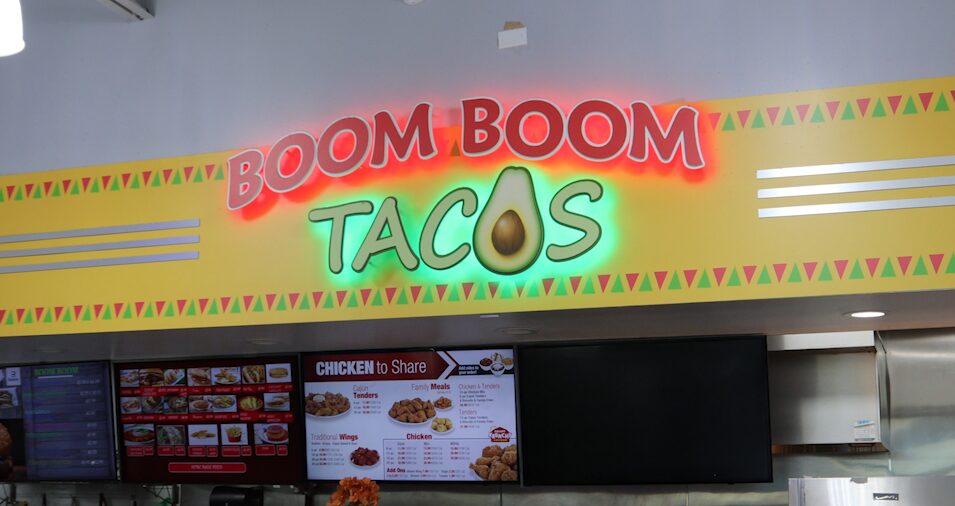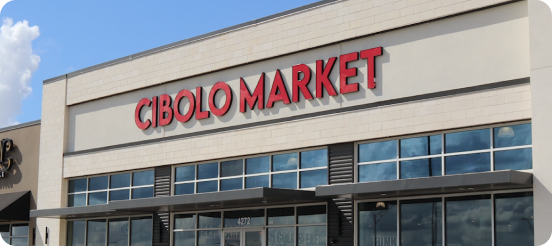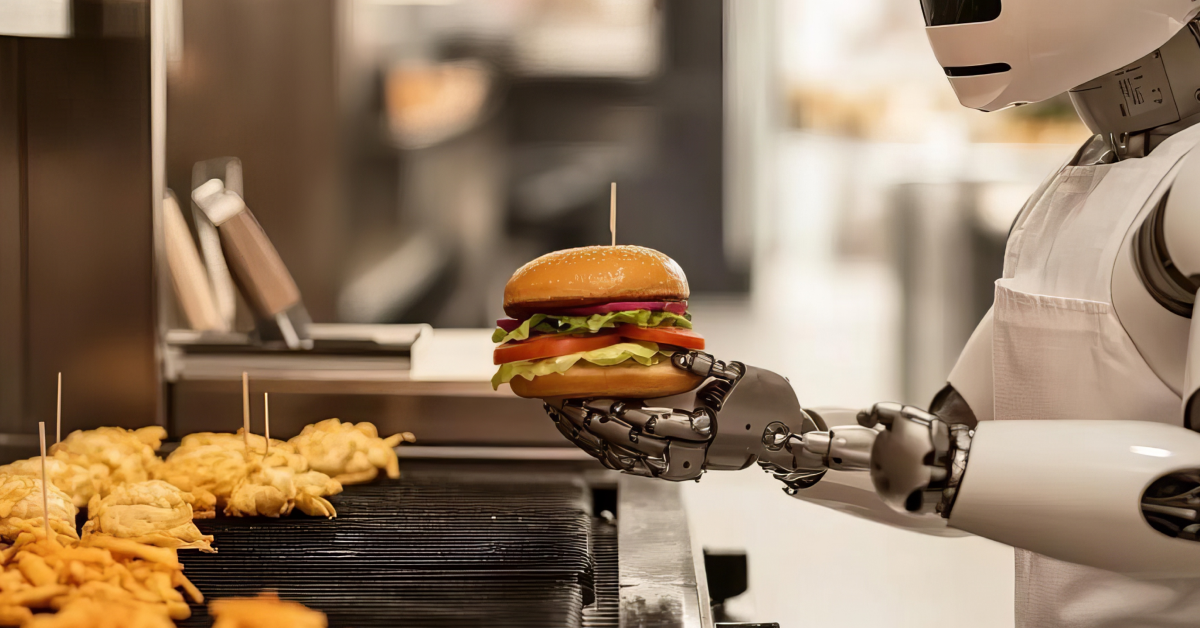6 Step Strategy to Tackle Rising Operational Costs in Restaurants

- May 5, 2025

As labor costs and inflation continue to rise, many restaurant owners feel they have no choice but to raise menu prices. Unfortunately, this often makes things worse, especially for small restaurant owners who know that customers are always on the lookout for affordable dining options.
At this point, it becomes clear that increasing menu prices to the point where they’re out of reach for your customers isn’t the solution to tackling rising operational costs. So, what’s the alternative?
We’ll walk you through the most effective strategies to optimize your restaurant operations without losing your competitive edge or customer loyalty.
Why Restaurant Costs Are Rising and What You Can Do About It
Restaurant operating costs have been steadily climbing, and 2025 is no exception. According to the National Restaurant Association, inflation continues to strain the industry, with food prices increasing significantly in recent years. Add to that rising labor costs, and energy prices that are increasing due to supply shortages, and it’s no wonder restaurant owners are feeling the squeeze.
These rising costs, combined with disruptions in supply chains, have left many operators scrambling to maintain profit margins. In fact, the cost of ingredients like proteins, dairy, and even packaging has skyrocketed, squeezing budgets across the board.
What’s concerning is that these cost increases aren’t slowing down anytime soon. Restaurant operating costs have surged in recent years, with many owners struggling to balance their budgets while still delivering high-quality food and service. In a time where consumers are also feeling the pinch from inflation, raising menu prices too much could drive away loyal customers.
The key to surviving this storm is finding ways to cut costs without sacrificing the quality that keeps customers coming back.
Step 1: How to Cut Costs Without Cutting Quality
No one wants to sacrifice the quality of their food or service, but you do need to manage costs. Cutting costs without affecting the customer experience comes down to smart, strategic decisions.
Firstly, begin by streamlining your menu. This doesn’t mean you have to go minimal, but reducing the number of items on the menu can lower ingredient costs, minimize waste, and reduce the burden on your kitchen staff. Consider removing underperforming dishes that don’t sell well and focus on your bestsellers. This allows you to buy ingredients in bulk for your high-demand dishes, lowering your per-unit costs.
Secondly, optimize portion sizes. Slightly adjusting portion sizes can save you a lot without affecting the customer experience. Keep in mind that customers generally don’t notice small changes, but the savings over time can be substantial.
Step 2: Use Technology to Streamline Operations and Save Money
Technology is a powerful ally when it comes to reducing operational costs. By investing in the right tools, you can automate repetitive tasks, reduce human error, and improve efficiency across the board.
A POS system (point of sale) that integrates seamlessly with your inventory management is essential. Modern POS systems not only track sales but also help you manage stock in real-time, ensuring that you never overorder ingredients or run out of stock unexpectedly. With these systems, you can also get detailed reports on the best-selling items, helping you fine-tune your menu and pricing.
Another area to explore is automating scheduling. With labor costs being one of the largest expenses, tools that help schedule shifts based on peak hours and employee availability can save you significant amounts in overtime and overstaffing.
Lastly, smart kitchen equipment can save you both time and money. For instance, energy-efficient ovens and refrigerators might cost more upfront, but they’ll pay off in the long run by reducing your energy consumption.
Step 3: Simple Ways to Lower Energy Bills and Save on Utilities
Utility costs are another significant expense for restaurants. Energy bills for restaurants have increased in the last year, primarily due to rising electricity and natural gas prices. Here’s how you can lower those bills.
Upgrade to energy-efficient appliances. If your kitchen is still using outdated equipment, it may be time for an upgrade. Energy-efficient appliances use less electricity, which can significantly reduce your monthly bills. Consider ENERGY STAR-certified ovens, refrigerators, and dishwashers that are designed to operate with maximum efficiency.
Opt for LED lighting throughout your restaurant. LED lights are far more efficient than traditional incandescent lights, and they last much longer, meaning you won’t have to replace them as often. Switching out all your lighting for LEDs could reduce your lighting costs by as much as 75%.
Install a smart thermostat to regulate your restaurant’s temperature. This way, you’re not cooling or heating an empty dining area during off-hours. Smart thermostats can be programmed to adjust automatically, saving you up to 15% annually on heating and cooling costs.
Step 4: How to Optimize Labor Costs
Labor costs are often the highest expenditure for restaurant owners. Fortunately, there are several ways to optimize labor without reducing the quality of service. But first, it’s important to have a clear understanding of your current labor expenses.
Free tools like labor cost calculator can help you get an accurate picture of how much you’re spending on staff. Once you know your labor costs, consider implementing advanced employee scheduling software. This tool allows you to forecast busy and slow periods and adjust shifts accordingly. By aligning staffing levels with actual demand, you avoid paying for excess labor during slow times or understaffing during peak hours.
Next, cross-train your employees. When employees are trained to handle multiple roles, you can schedule fewer staff while still maintaining a smooth operation. For example, a server who can also assist with food prep or a cook who can help with dishwashing gives you flexibility, especially during busy shifts.
Finally, incentivize efficiency. Reward employees for keeping operations running smoothly, whether it’s reducing table turnover time or handling more orders. Incentives can motivate employees to stay focused and efficient, which in turn reduces labor costs.
Step 5: Negotiate with Suppliers and Vendors
Suppliers and vendors are a crucial part of your restaurant’s operations, but that doesn’t mean you have to accept their prices without question. The key to saving money is building strong relationships with your suppliers while negotiating better terms.
Start by regularly reviewing your inventory and purchase patterns. By tracking your stock usage, you’ll know exactly where to buy in bulk and where to cut back. If you’re ordering ingredients that are consistently used across multiple menu items, you may be able to negotiate discounts for bulk purchases. Don’t be afraid to shop around for better prices or explore alternative suppliers that offer the same quality at a lower cost.
Additionally, consider renegotiating your contracts with vendors. If your current suppliers are offering less favorable pricing or terms, it might be time to shop around for a better deal. During your negotiations, always emphasize the potential for long-term business. Suppliers are often willing to offer better pricing if they know you’re committed to purchasing from them over an extended period.
Step 6: Implement Waste Reduction Practices
Reducing waste is not just good for the environment, it’s also a great way to cut costs. Food waste alone can account for a significant portion of restaurant expenses, and implementing waste reduction strategies can make a real impact on your bottom line.
Start by carefully reviewing your inventory management and food prep practices. The more you can track and optimize the life cycle of your ingredients, the less you’ll waste. For example, proper storage practices can extend the shelf life of perishables, reducing spoilage. Similarly, managing portion control can help ensure that you’re using the right amounts of ingredients in each dish.
Additionally, don’t overlook non-food waste. Consider the amount of packaging waste you generate and see if there’s a way to reduce it by switching to eco-friendly packaging or bulk packaging options. Another approach is to recycle or repurpose items where possible, such as using leftover food for employee meals instead of throwing it away.
Beat The Odds with the Right Strategy
Rising operational costs are inevitable, but they don’t have to sink your restaurant. With the right approach, you can keep your business profitable while delivering great value to your customers. It’s time to stop letting rising costs control your business. By implementing this 6-step strategy, you’ll not only survive but also stay ahead of the competition.
FAQs
1. How can I lower labor costs without compromising service?
To reduce labor costs while maintaining service quality, focus on efficiency. Scheduling software can help you optimize shifts and reduce overstaffing. Cross-training employees allows them to take on multiple roles, while offering incentives for quicker service can motivate your team to work more efficiently.
2. What are the best ways to cut down on food waste?
Reducing food waste starts with better inventory management. Track your stock carefully, store ingredients properly to extend shelf life, and use leftovers creatively, like offering daily specials. Portion control and using accurate prep quantities can also help minimize waste while keeping costs in check.
3. Can technology actually help me reduce operational costs?
Yes, tech can be a big help! Tools like modern POS systems automate inventory tracking, preventing overstocking or shortages. Scheduling software optimizes shifts, saving on labor costs. And investing in energy-efficient kitchen equipment can lower utility bills, leading to long-term savings.
4. How do I negotiate better pricing with suppliers?
Negotiating better prices is possible! Start by analyzing your buying patterns and comparing prices from different suppliers. Don’t hesitate to ask for discounts, especially when ordering in bulk. Joining a group purchasing organization (GPO) can also help you secure better deals by pooling your buying power with other businesses.
5. How does menu optimization help reduce costs?
Menu optimization helps you reduce costs by focusing on your best-selling items. This cuts ingredient waste, minimizes complexity in the kitchen, and allows you to buy in bulk, which lowers per-unit costs. A streamlined menu can improve both your operations and profit margins.
























